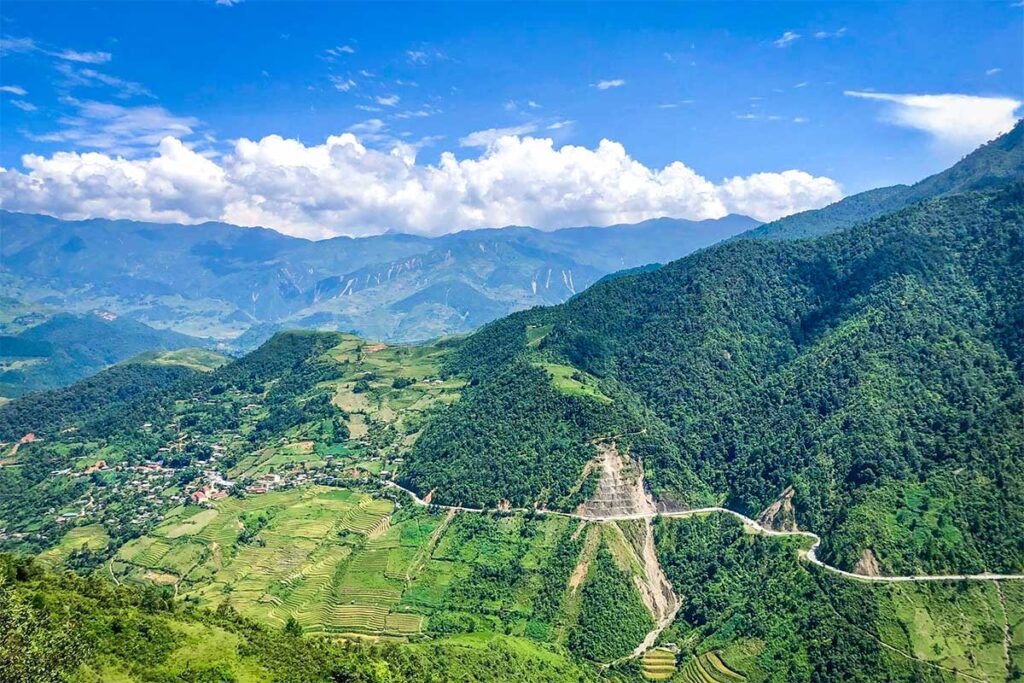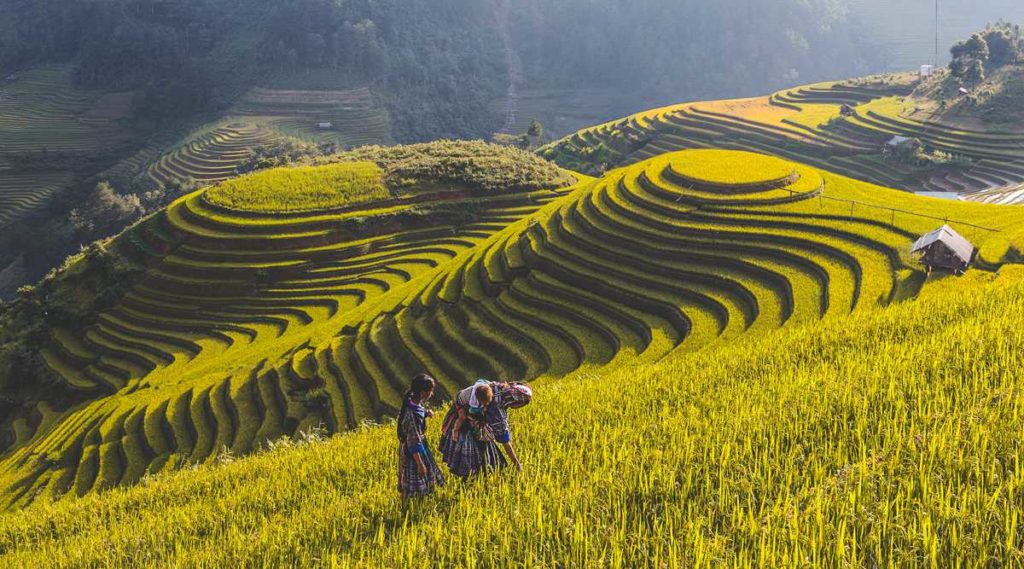What is Khau Pha Pass like?
Khau Pha Pass is a steep and winding mountain road that stretches about 30 kilometers through the highlands of Yen Bai Province. The road climbs above 1,200 meters in elevation, offering dramatic views of valleys, forested slopes, and terraced rice fields below. On clear days, the scenery is unforgettable—especially during the golden rice season.
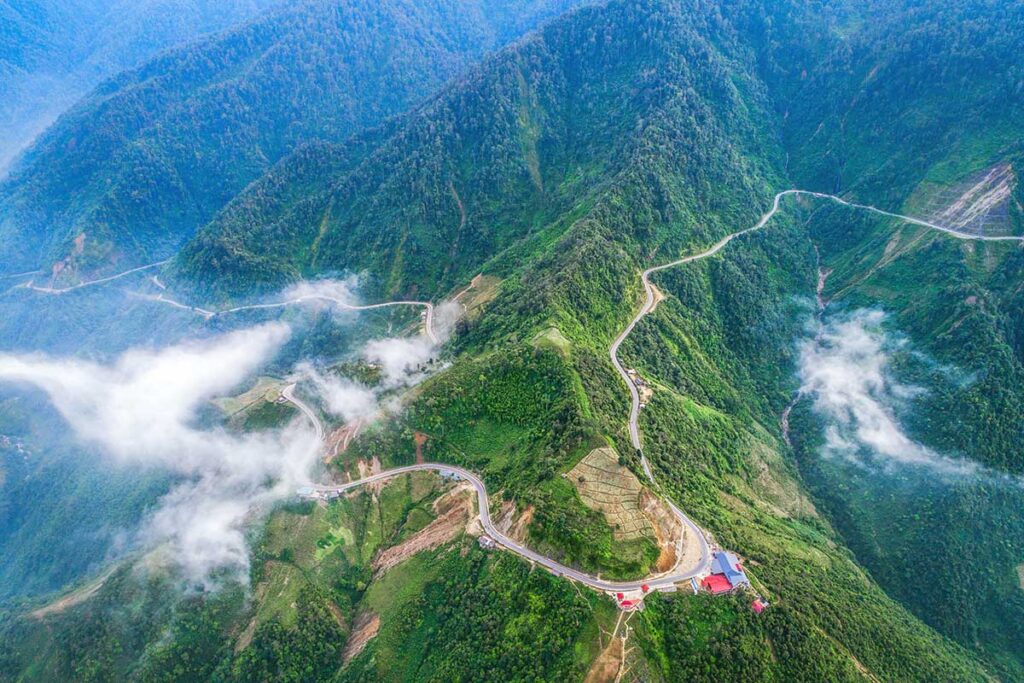
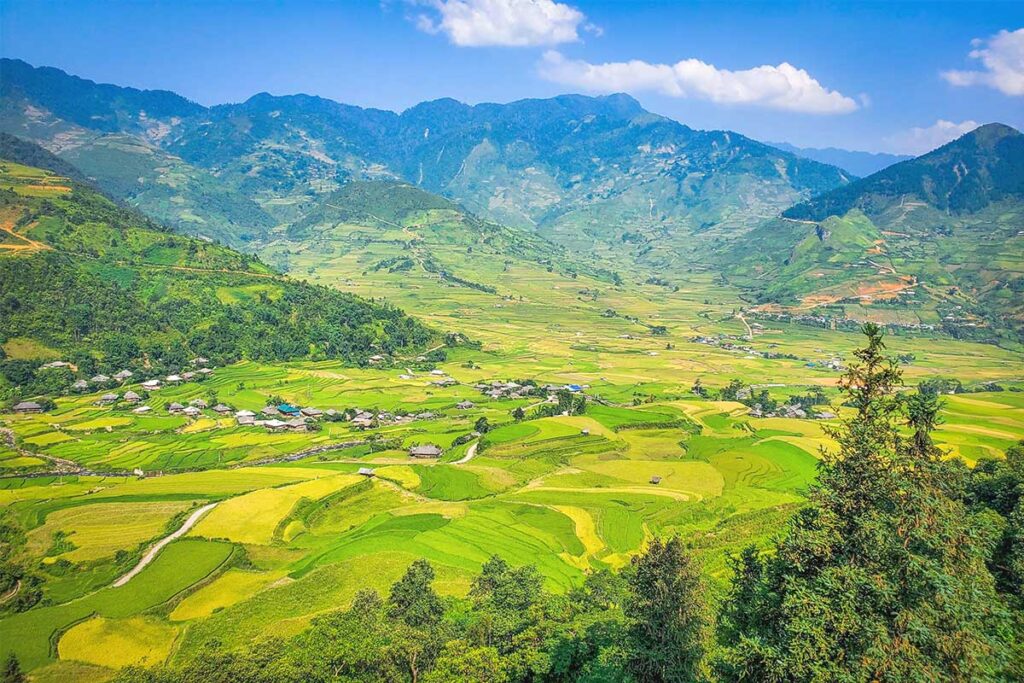
The name “Khau Pha” comes from the Thai ethnic language, where khau means “mountain pass” and pha means “sky.” Together, it translates to “Sky Pass,” a fitting name for a road that often cuts through the clouds.
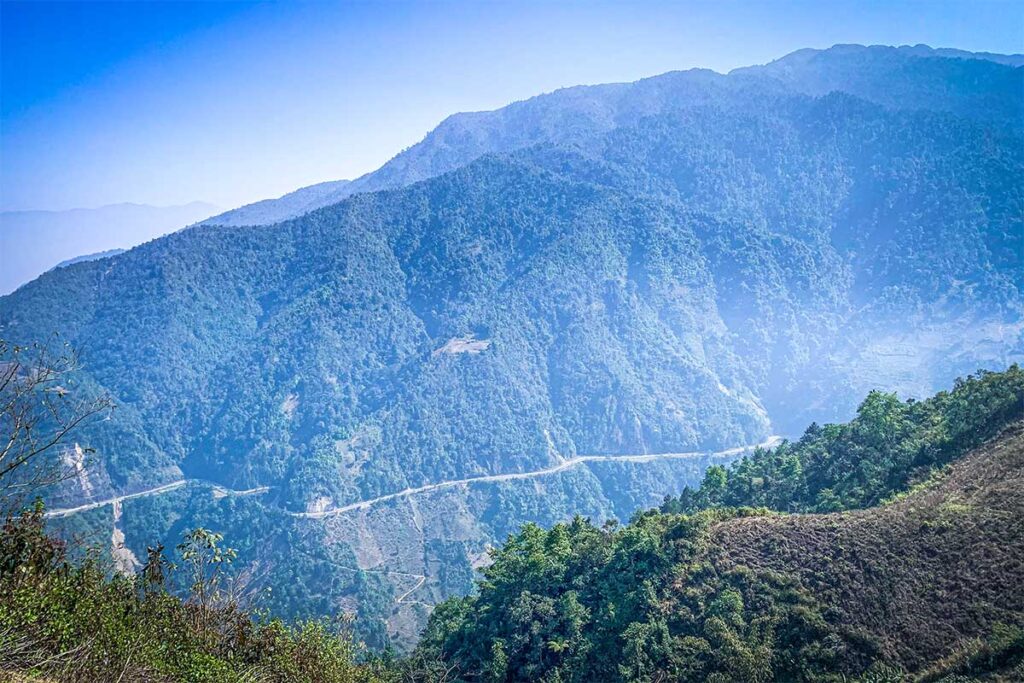
It’s also one of Vietnam’s Four Great Passes—a group of the most impressive and challenging mountain roads in the country. The other three are O Quy Ho Pass (Lao Cai–Lai Chau), Pha Din Pass (Son La–Dien Bien), and Ma Pi Leng Pass (Ha Giang).
Despite its reputation, Khau Pha Pass isn’t as dangerous as it’s often described. The road is paved and in decent condition, with guardrails in the steepest sections. That said, you should always drive cautiously, especially in foggy or wet weather.
This pass is part of our Mu Cang Chai tours
Drive through Khau Pha Pass as part of a larger journey through Mu Cang Chai. Our tours include stops at scenic viewpoints, trekking, and full transport from Hanoi.
Where is Khau Pha Pass?
Khau Pha Pass is located in Yen Bai Province, in the northwest of Vietnam. It lies along National Road 32 (QL32), connecting Van Chan District and Mu Cang Chai District—two regions known for their mountainous landscapes and ethnic minority villages.
The pass is about 265 kilometers from Hanoi and stretches roughly 30 kilometers in length. Most travelers experience Khau Pha as part of a longer trip to Mu Cang Chai, which is famous for its terraced rice fields and less touristy atmosphere compared to Sapa. The pass serves as a dramatic gateway into this region.
How to get there (and best ways to drive it)
Driving a motorbike
Riding a motorbike gives you full control over stopping for photos and taking your time on the curves. Choose between self-driving (you’ll need a license and International Driving Permit) or sitting on the back with an Easy Rider guide. It’s adventurous and immersive—but less comfortable, especially in bad weather.
Car with driver
If you’re not confident on two wheels (or want more protection from wind and rain), a car is your best bet. You can still stop at viewpoints, and a local driver often offers insider knowledge. You get comfort, flexibility, and a guide rolled into one.
By bus
Buses travel from Hanoi to Mu Cang Chai but don’t make stops on the pass. You can take the bus there, then rent a motorbike or car for the return journey so you can properly experience Khau Pha. This method saves on transport but requires extra planning for the pass itself.
What to see & do along Khau Pha Pass
Driving Khau Pha Pass is about more than just getting from A to B. Along the way, there are plenty of worthwhile stops—some quick viewpoints, others full experiences like paragliding or cultural stays. Here’s what to look out for.
1. Scenic drive
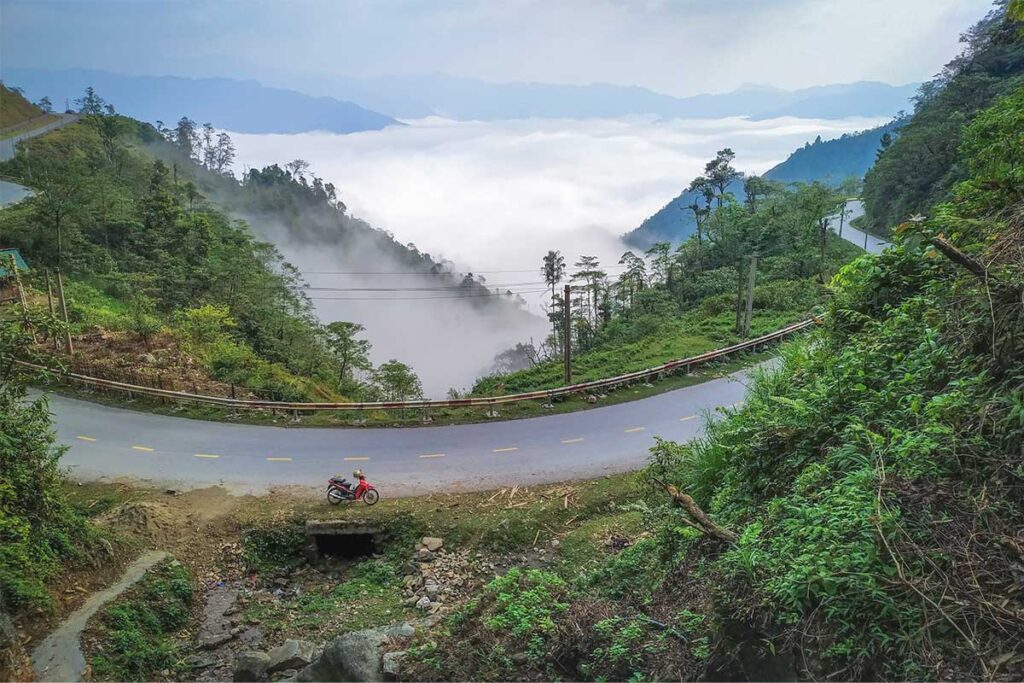
This is the main reason people visit Khau Pha. The road winds dramatically through mountain ridges, with sweeping views of valleys, rice terraces, and forested slopes. During September and October, the rice turns golden yellow, creating one of the most photogenic landscapes in Vietnam. Even outside the harvest season, the road itself is a joy to drive, with fresh air and changing views around every corner.
2. Paragliding
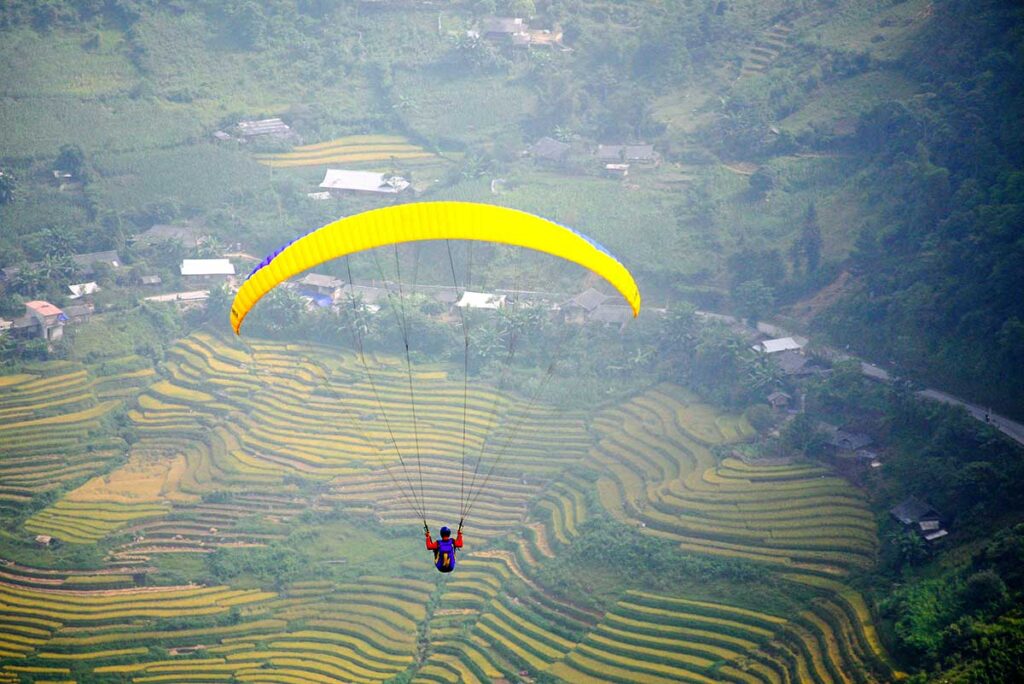
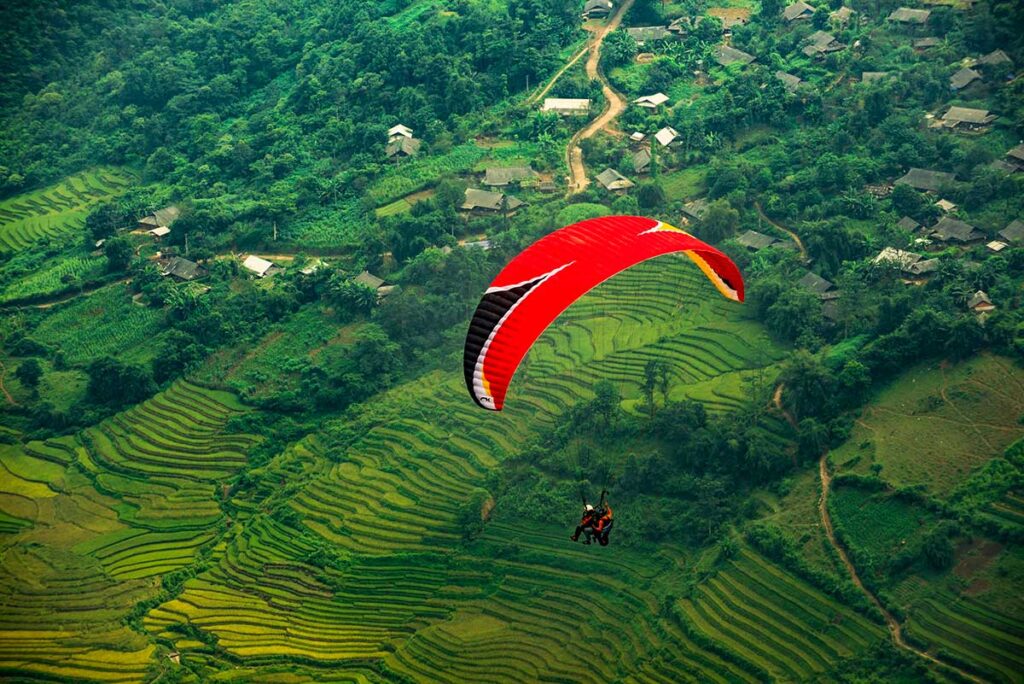
Khau Pha Pass is the most famous paragliding spot in Vietnam, especially during the Mu Cang Chai ripe rice festival in autumn. Tandem flights are available for all experience levels, launching from a dedicated site near the pass’s highest point. The experience offers bird’s-eye views of layered rice terraces, rivers, and forested valleys.
Even if you’re not flying, the take-off café nearby is a fantastic viewpoint where you can watch paragliders take off while enjoying a drink. The atmosphere is relaxed, and the scenery makes it one of the best stops along the pass.
3. Cao Pha Waterfall
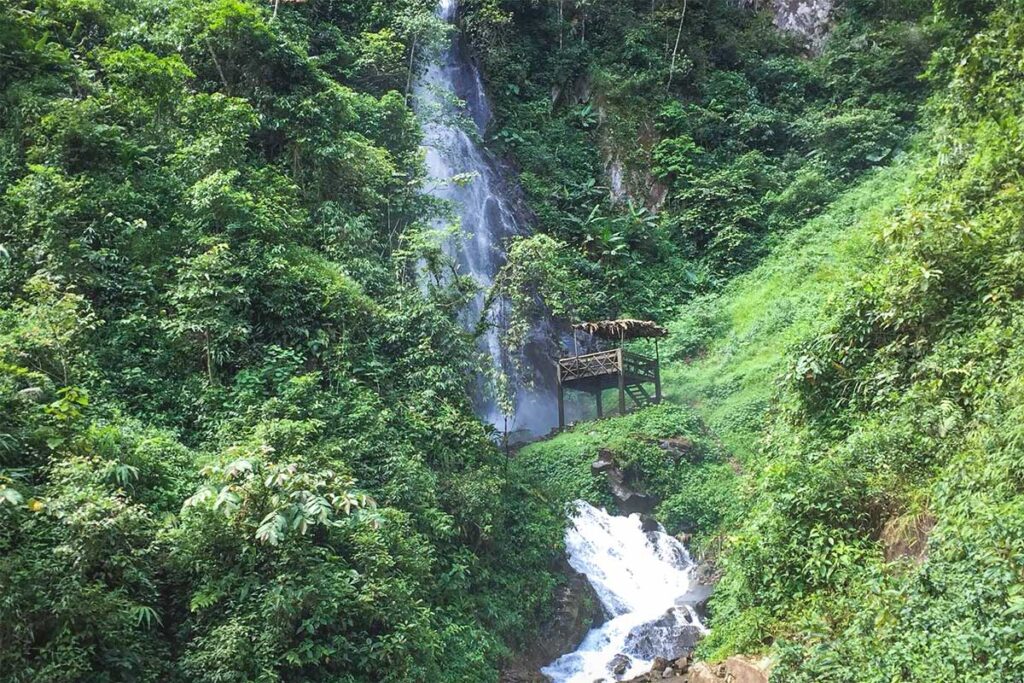
Just a short distance from the paragliding area, Cao Pha Waterfall is a small roadside cascade. It’s easy to spot and only a short walk from the road. It’s not very impressive in the dry season and there’s no natural pool for swimming, but it makes for a quick stop to stretch your legs.
4. Guerrilla Hill Memorial
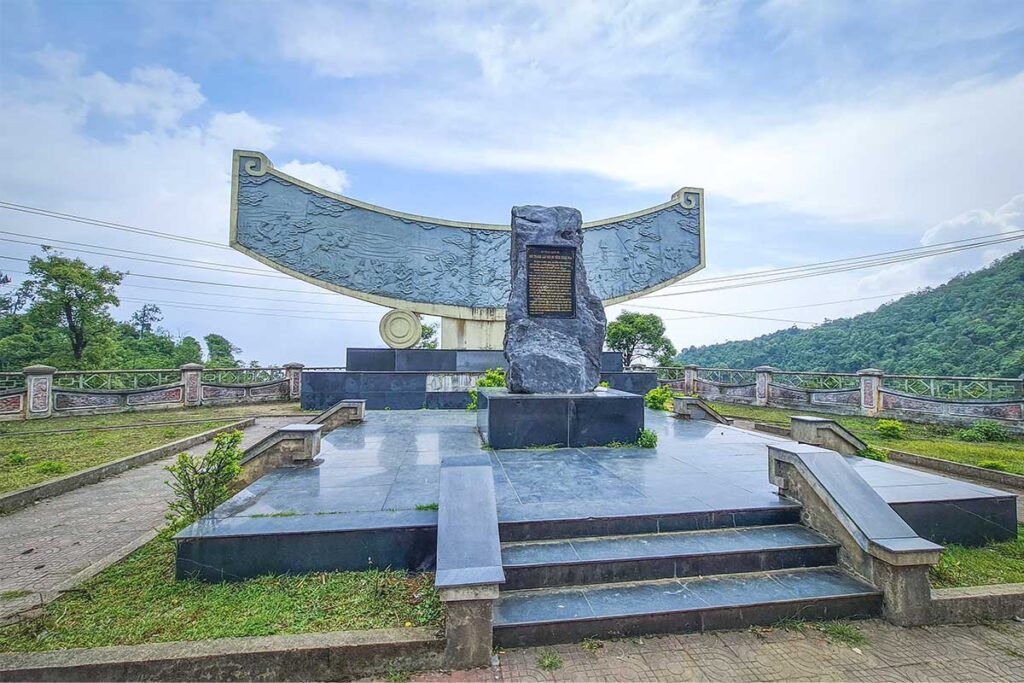
Also known as the Khau Pha Guerrilla Team Relic, this small monument marks the spot where local fighters resisted French forces in 1947. The site is simple—just a stele and some benches—but the views are excellent, especially when the valley below fills with morning mist. It’s not a major attraction, but a quiet place to stop and take in the history and scenery.
5. Ethnic Villages in Cao Pha Commune
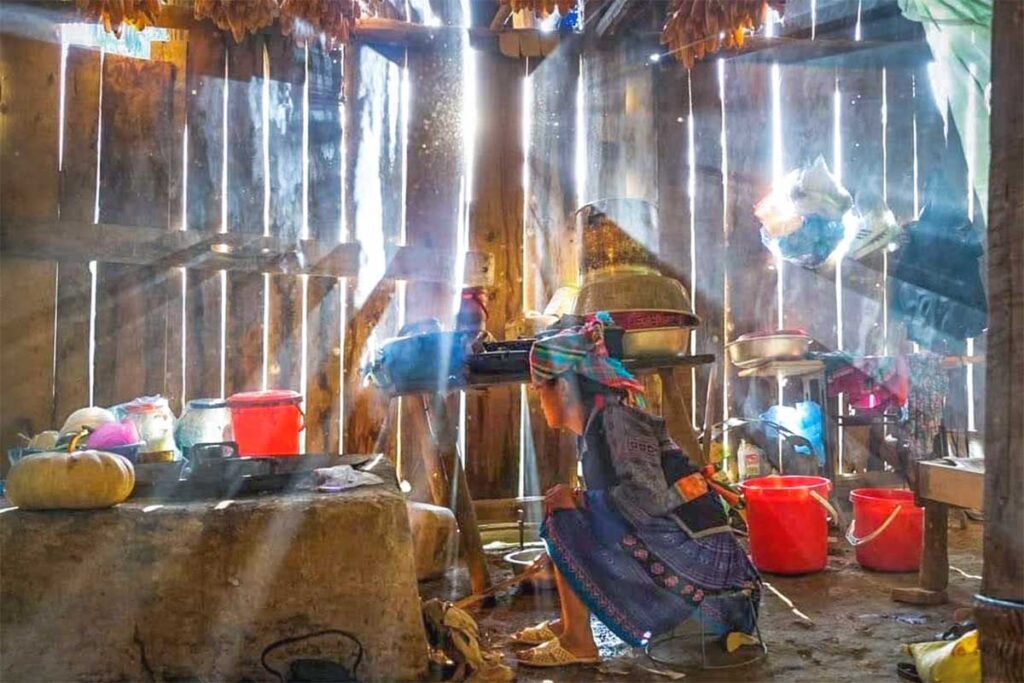
At the foot of the pass, in Cao Pha Commune, you’ll find several ethnic minority villages tucked away along side roads.
The area is home to Hmong and Thai communities, and it’s possible to visit for a short look or even stay overnight in a local homestay.
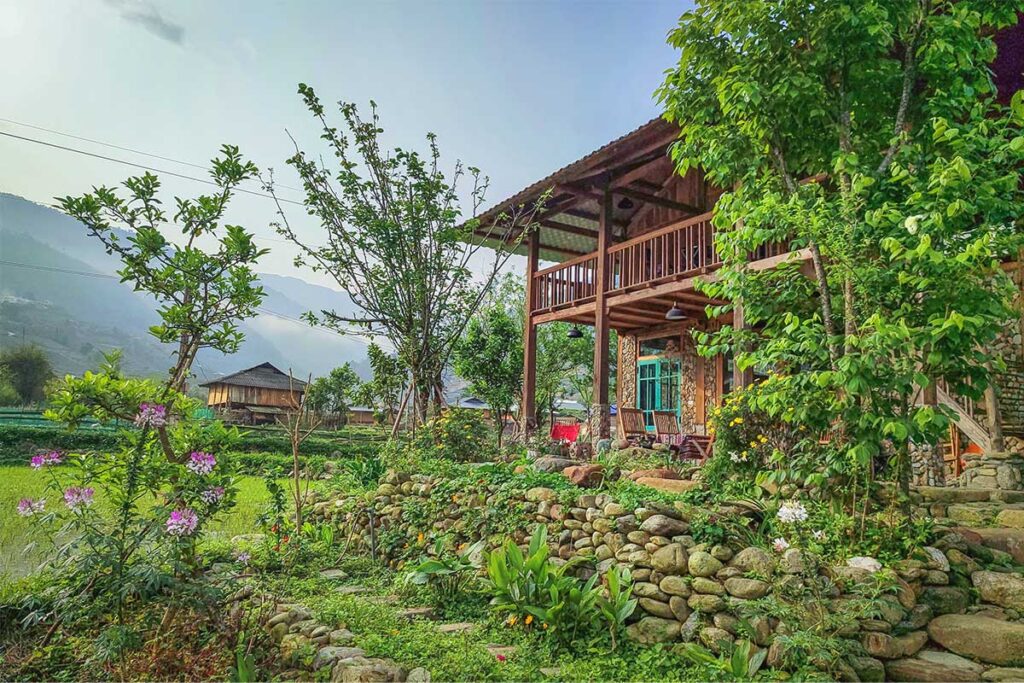
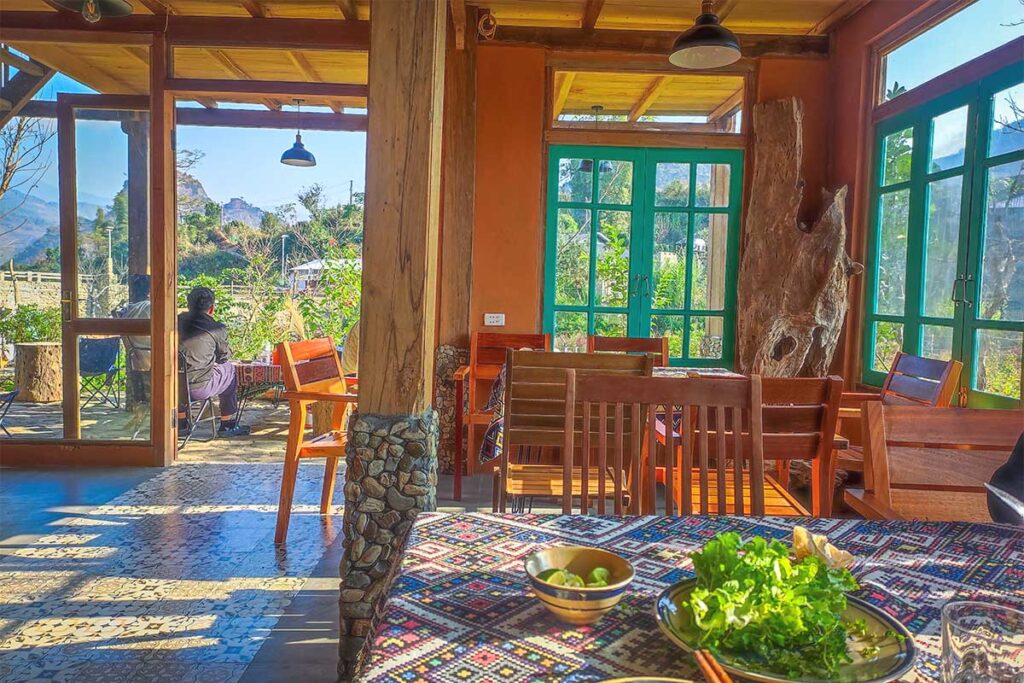
Some accommodations are very basic and family-run, while others are more modern but still traditional in style. Spending time here offers a more personal insight into the region’s culture than just driving through.
Quick guide to Mu Cang Chai
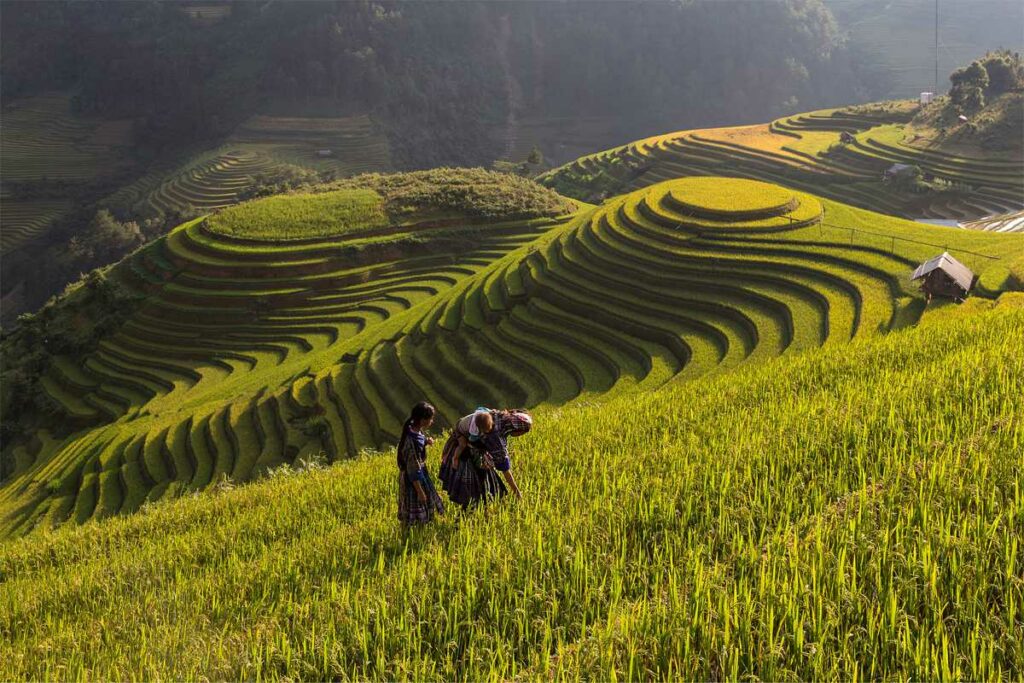
Khau Pha Pass is just the start—Mu Cang Chai is the real highlight of this region. Connected directly to the pass, the district is home to what many consider the most beautiful terraced rice fields in all of Vietnam.
Unlike Sapa, Mu Cang Chai remains much less developed, with fewer tourists, more authentic village life, and landscapes that feel untouched. The area is especially stunning during the rice harvest season (September–October) and the water season (May–June), when the terraces either shine golden or reflect the sky like mirrors.
Most travelers visiting Khau Pha Pass choose to stay in Mu Cang Chai as their base. It’s the perfect place to combine scenic drives, short hikes, cultural experiences, and relaxed countryside stays.
→ Read our complete Mu Cang Chai travel guide
Best time to Visit Khau Pha Pass
Khau Pha Pass is beautiful year-round, but the experience can vary a lot depending on the season. Some months offer better scenery, while others bring more comfortable weather. Here’s what to expect:
For scenery
- May to June – Water season
During this time, farmers flood the rice terraces in preparation for planting. The fields reflect the sky, clouds, and surrounding mountains, creating a surreal, mirror-like effect. It’s a favorite for photographers looking for dramatic landscapes. - September to October – Golden rice season
This is the most popular time to visit. The rice is fully grown and glowing golden yellow, covering the mountains in layers of color. It’s the peak season for paragliding and the best time for postcard-worthy views. - November – Cloud-hunting season
After the rice harvest, the landscape becomes quieter, but early mornings often bring thick clouds rolling through the valleys. If you’re after misty mountain views, this is a great time to come.
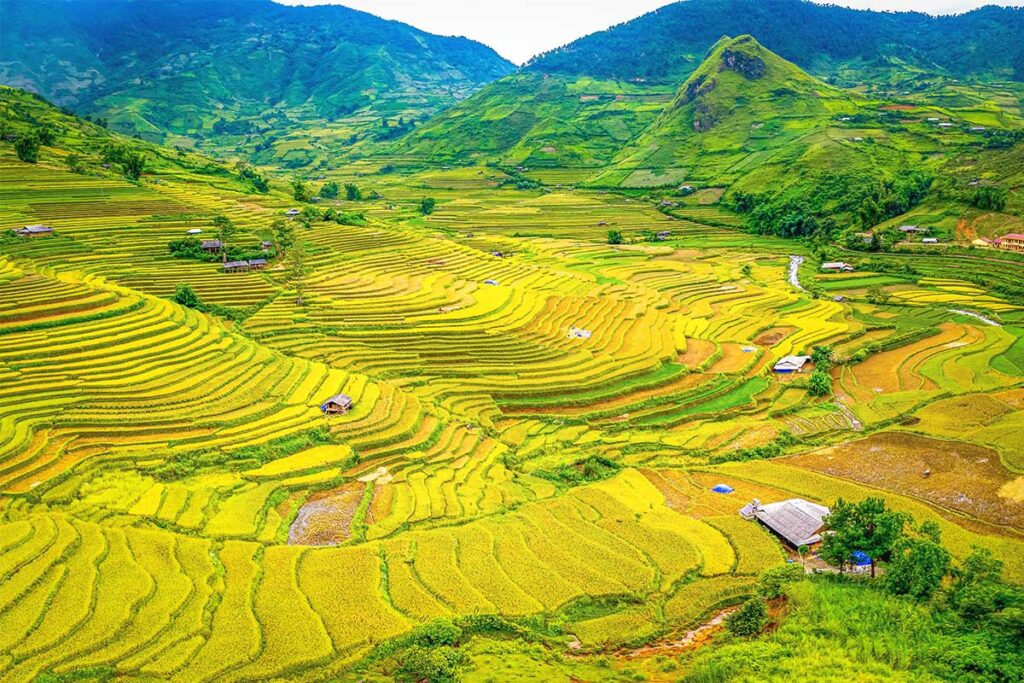
For weather
- Spring (March to May) & Autumn (September to November)
These months offer the best balance—moderate temperatures, less rainfall, and clearer skies. It’s the most reliable time for good driving conditions and outdoor activities. - Summer (June to August)
Expect heavy rain, often in the afternoons or at night. Still, there are often windows of clear weather during the day, and the landscapes are lush and green. It’s also much warmer on the pass compared to winter. - Winter (December to February)
Winter can be cold, especially at higher altitudes like Khau Pha. Fog is common, and visibility is often limited. That said, the roads remain passable, and if you’re well prepared, it’s still safe to visit—just don’t expect wide open views.
Travel tips for exploring Khau Pha Pass
Khau Pha Pass is not only scenic but also remote and mountainous, so a bit of preparation goes a long way. Here are some practical tips to help you make the most of your trip.
Prepare for colder temperatures
Even if it’s warm when you leave, the temperature drops quickly as you gain altitude. If you’re on a motorbike, the wind can make it feel even colder. Bring a windproof jacket and dress in layers—it’s easy to take things off if you get too warm.
Drive smart
The road is generally in decent condition, but it’s still a mountain pass with sharp curves and steep drops. There are guardrails in the most dangerous sections, but you should always drive defensively. Stay on the right side, go slow, and avoid automatic scooters—manual or semi-automatic bikes are much safer on mountain roads.
Pack for remote travel
Once you’re on the pass, don’t expect shops or services around every corner. Fuel up before you go, and carry water, snacks, sunscreen, and anything else you might need. There are a few local cafés and homestays, but it’s always best to come prepared.
Respect the local culture
The area around the pass is home to Hmong, Thai, and other ethnic minority communities. Be respectful—dress modestly, ask before taking photos, and support local businesses when you can. A little cultural sensitivity makes a big difference.
